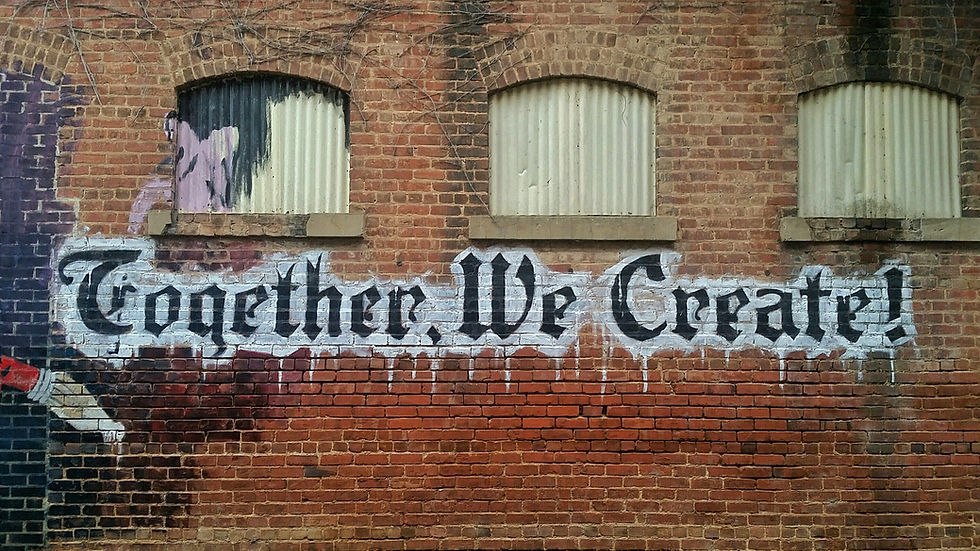Ultimately, words always fail.

Nothing stays the same. Nothing is forever. Everything changes.
One Zen Truth.
Another truth? Words are illusory, a finger pointing at the moon. The words are not the moon.
Then, why speak? Because when someone points to the moon and says, “Look, the moon,” sometimes we see the moon.
Ultimately, words always fail. As the Zen teachers say, “Open mouth is already a mistake.”
We talk about our mission in order to build a shared sense of purpose and direction.
The words inevitably fail.
We began building our schools from the mission of The Verrazano Foundation — to level the playing field for people living with mental illnesses, specifically for students living with mental illnesses. This quickly morphed first to “students diagnosed with mental illnesses” and then to “students living with emotional challenges,” an effort to destigmatize our language in response to criticisms from people in recovery. We then broadened this further to include “other disabilities” as we sought to accommodate the education system’s category of “students with disabilities.” Over the years, we have become increasingly uncomfortable with the word “disabilities” itself. In working on the design of Richmond Prep and our plan to really serve students on the Autism spectrum, we became more inclined to talk about the “differently abled.” It still feels awkward.
Pointing at the moon. First with one finger, then with another.
Our Mission
Nevertheless, this was our official mission for most of our history. But even as we were writing our first charter, something more was brewing. Two facts drove us forward. First, students diagnosed with mental illnesses have the lowest graduation rate of any disability group. When we thought about the challenges that many others were facing and yet were still graduating at higher rates, we knew that we could do better with our kids. We knew that the segregated schooling, the discrimination and the bullying which they routinely experienced, was adding greatly to the challenges that our students brought to the table. If we could as a school stop making things worse, we were sure that they would do better. This fact, this belief was what we talked about the most.
The second fact, equally startling, was that well over 40% of the people entering teaching were leaving the field within five years. No wonder there was a growing teacher shortage.
Clearly, most schools were terrible places to work. There was no other way to look at it.
From the beginning, we set out to change that — to build schools which were great places to work and where teachers thrived. But we were hesitant to announce this as a goal. Charter schools were far from accepted. The education establishment, the city and the state already thought we were crazy to want to fully integrate students with emotional challenges. And there was a sense that charter schools might be low-quality enclaves for failing or under-qualified teachers.
The enemies of charters still rant, and they may be gaining in power in America. It’s a complicated story. In the beginning, we didn’t have the courage to challenge the belief that public schools were good places to work. The education bureaucracies from whom we had to receive our charters were not eager to embrace those who pointed out their failures. Maybe it wasn’t a lack of courage. Maybe our discretion was the better part of valor.
We got the first charter and then the second. We were in the process of building schools where young teachers could begin their careers and hone their art. We were and are succeeding. Even when teachers leave us —and we almost always feel terrible when they do — we are also proud. They are not leaving education. They are going to other schools. They are taking what they learned with us, what they gained from their experience here, and are going on to help students elsewhere.
Now we are ready to own it, this unspoken part of our mission. Integration Charter Schools. Great schools for students and teachers.
Let’s be honest. There are no great schools for students which are also great schools for teachers. Some great teachers will still leave us, for a variety of reasons.
Some will relocate, perhaps for family reasons.
Some will be drawn to shorter hours. Some will be attracted by higher wages.
Some will be drawn to pensions.
While we will try to be competitive on the important extrinsic rewards of our work, at the end of the day, we succeed by relying on the intrinsics. When you come to work at any of our schools, you are able to leave each day with the knowledge that you are making a difference in kids’ lives, in the lives of kids who would have very little hope were it not for you.
You can feel good about what you’re doing and who you are doing it with.
You can feel appreciated and valued. You can feel proud of your team and your school, proud to be part of this family. Here you can thrive.
Extremely Challenging Work
The work that we are doing is extremely challenging work. Teaching is complicated and difficult. Unless you feel good about what you are accomplishing and about the people you are collaborating with every day, then no one can pay you enough. There are easier ways to make a living.
Since our first year, Founding Principal Evelyn Finn has asked, “Are we still having fun?” Maybe “fun” is not exactly the right word. Maybe we should tweak the question. “Is your work, our work, a source of joy in your life?” If not, then something is wrong, and we need to fix it together.
Don’t be surprised. The wisdom of Zen is that every “truth” is impermanent.
Great schools for both students and teachers.
I am inspired by these words. And I know they will grow old and will need to be refreshed. They are fingers pointing, not the moon.
Comments